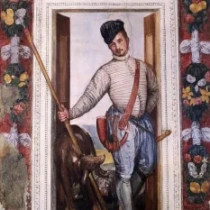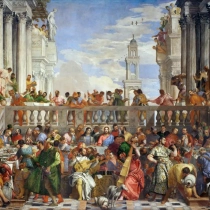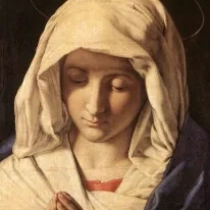 1528 - 1588
mannerism
1528 - 1588
mannerism
Description Paolo Veronese (Caliari)
Paolo Veronese, born in 1528 in Verona, Italy, ascended to artistic eminence during the Venetian Renaissance. His given name, Paolo Caliari, became synonymous with grandeur, color, and the theatrical splendor that defined the Venetian school of painting.
Veronese's artistic apprenticeship commenced in Verona, but his relocation to Venice marked a turning point. The vibrant cultural tapestry of the city ignited his creative fervor, and his encounters with the works of Titian and Tintoretto fueled his ambition.
His early works demonstrated a mastery of color and composition, but it was his monumental paintings for the Doge's Palace and the Venetian Republic that solidified his status as a preeminent Venetian painter. "The Wedding at Cana," an opulent feast of colors and sumptuous details, exemplified his ability to elevate scenes to grandiose spectacles.
Veronese's forte lay in his capacity to orchestrate complex compositions with an ease that bordered on the theatrical. His paintings, often vast in scale, celebrated the richness of Venetian life, infusing religious and mythological narratives with a palpable sense of pageantry. The artist's use of luminous color, intricate textiles, and architectural opulence became his artistic signatures.
His collaboration with the architect Andrea Palladio further enriched his artistic repertoire, showcasing an ability to seamlessly integrate painting with architectural elements. The Villa Barbaro, adorned with Veronese's frescoes, remains a testament to this harmonious fusion of disciplines.
Yet, Veronese's success wasn't without controversy. In 1573, his painting "The Last Supper" sparked ecclesiastical scrutiny due to its inclusion of secular elements. The Inquisition compelled him to modify the title to the more acceptable "The Feast in the House of Levi," but the essence of lavishness and abundance remained.
In addition to his secular and religious masterpieces, Veronese excelled in portraiture, capturing the personalities of Venetian nobility with elegance and sophistication.
Paolo Veronese passed away in 1588, leaving behind a legacy that epitomized the opulence and splendor of the Venetian Renaissance. His ability to infuse both sacred and profane subjects with a sense of theatrical grandeur and his mastery of color contributed to the enduring allure of his works. Veronese's art, with its celebration of life's richness and diversity, continues to beckon viewers into a world where every canvas unfolds as a grand stage for the human experience.




No Comments Yet...